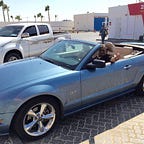Introduction
Schweinfurt is a city in Bavaria in Germany’. It is situated on the right bank of the Main River. In 1939 at the start of the war Schweinfurt produced most of Nazi Germany’s ball-bearings, which are an essential component of all armaments from tanks to guns. These factories were a target of the allies so as to try and cripple the German war effort. Air Chief Marshal Harris of the RAF was able to get his theory of strategic bombing as essential for victory accepted and General Ike Eisenhower the Allied Supreme Commander approved the air attack.
The battle
The main attacks on Schweinfurt were carried out by the USAAF. We must remember at that time the US Air Force functioned as apart of the Army. They put into practice Guilio Douhet’s concept of victory by strategic bombardment. This had been adopted by the Chief of the RAF Air Chief Marshal Harris.
The USAAF carried out 2 raids on Schweinfurt in 1943. The first raid was carried out in august 1943 and the Allied military command from available data concluded that the attack had resulted in a 34% reduction in production of ball bearings. The US Air Force had suffered heavy losses, with the result that a second raid was delayed by 4 months so as to build up resources.
The task for the second raid was given to the 8th Air Force and 5 squadrons consisting of 291, B-17 Flying Fortresses. Drawing on their experience of the first raid, planners decided that additional escorts would be provided for both the onward and return legs of the mission. It was also decided to concentrate the bomber force on Schweinfurt for maximum effect. This was in accordance with Douhet’s concept of strategic bombing.
The US Air force however did not make allowance for the greater accuracy of the German anti aircraft gunners and greater proficiency of the crew of the German fighters. These took a heavy toll of the US Air Force planes and air crew.
On 14 October 291 B-17 and 60 B-24(Liberators) took off for the mission. The Liberators were diverted to a secondary target to Emden because of a bad weather forecast. The B17’s of the 8th US air force concentrated on attacking Schweinfurt. The B-17’s were escorted by P-47 fighters. The range of the P-47 was limited and after a period the bombers were unescorted.
The German’s had picked up in advance the flight of the B-17 and Messerschmitt Bf 109 and Fock Wulf 190 were scrambled to intercept the bombers. Anti aircraft gunners were also ready for the advancing US air armada. The raid itself did not bring spectacular results and the aerial bombing was rated from poor to good. The B17’s ran into the fighter aircraft of the Jagdwaffe. In the ensuing fight 60 Flying Fortresses were destroyed by the fighters and anti aircraft guns. Another 17 were damaged so badly that on their return they had to be scrapped. 121 bombers suffered varied degree of damage which rendered them AOG (Aircraft on Ground) till repaired.
The cost in manpower was even worse as 22% of the aircrew consisting 650 men were either killed in action or taken prisoner of war. Only 65 survived the war as prisoners and returned home. The raid itself dented the USAAF ability to mount further attacks for at least 4 months. During this period one can safely conclude that the US 8th air force for the time being had lost control of the air.
The result of the air battle was a German victory and rightly the Luftwaffe was praised by Hitler.
Result
The Germans won a tactical victory but the bombing raid was however not without results. The attack by the B17 at Marienburg was precision bombing of the highest order and the Focke- Wulf plant was decimated. This attack is hailed as a classic example of precision bombing.
The German Air Force fighter wing lost about 35 planes while another 20 were damaged. At the end of the war the US air force acknowledged the heavy losses suffered in the raid. They had kept this information under wraps so that morale is not dented.
The Schweinfurt raid brought out some important lessons. It showed that precision bombing could have decisive results. It also brought out the fact that unescorted heavy bombers could not be risked without adequate fighter cover. In this case proper fighter escort was not available, had they been around the result may have been different. The air raids gave a warning to the US and British command about the efficacy of the German armed forces and thus “operation overlord” the invasion of France was delayed.
